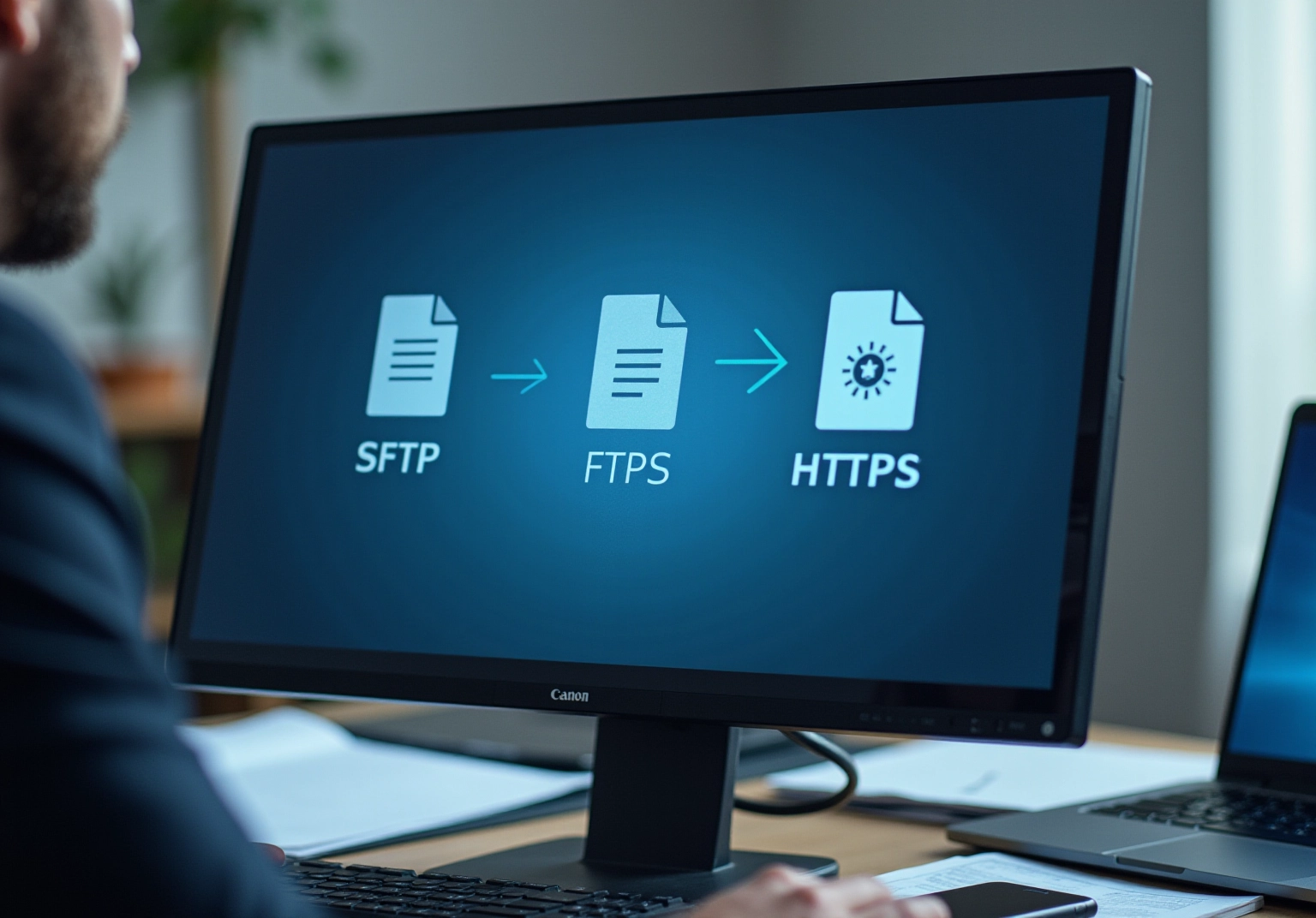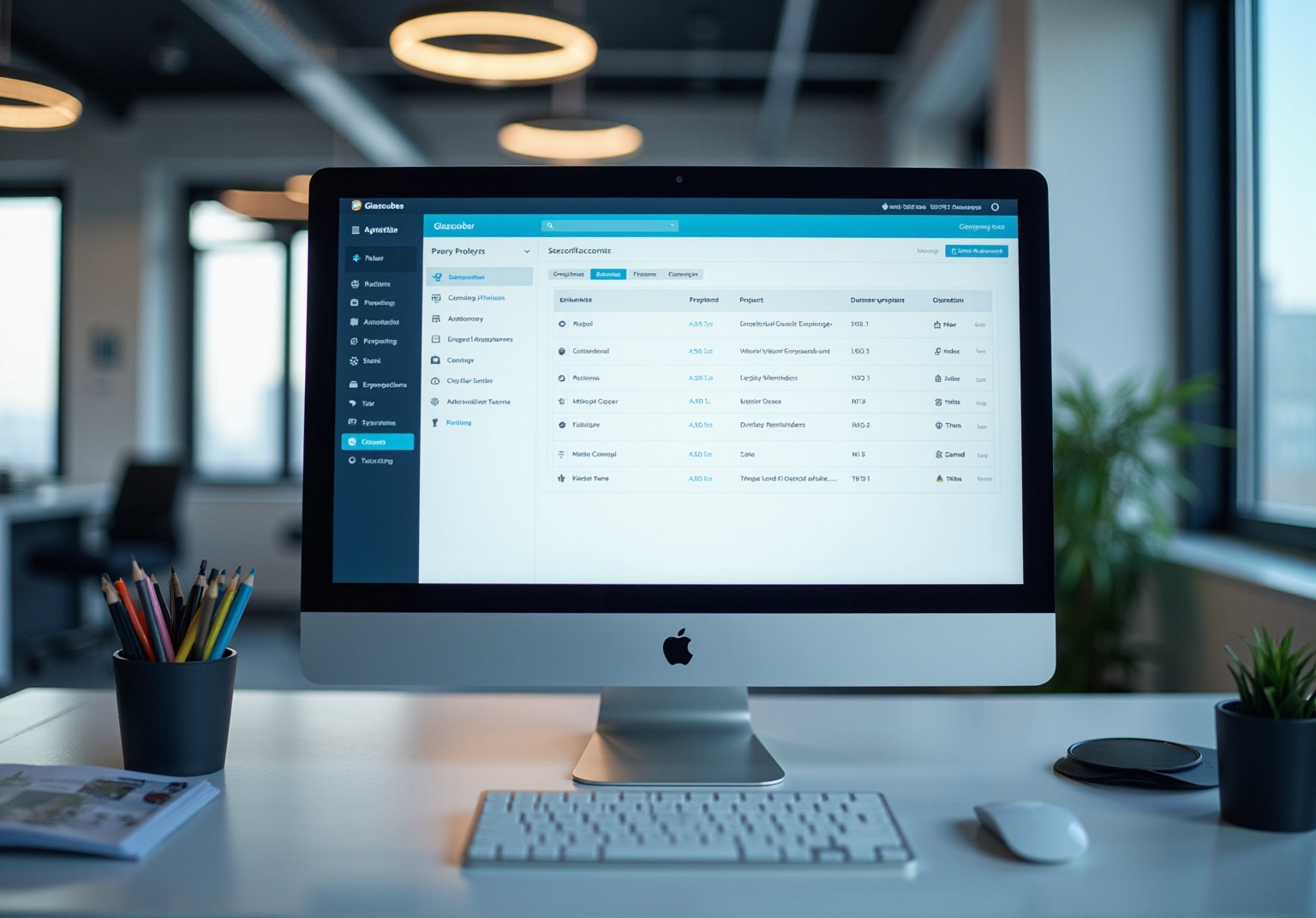Overview
To securely transfer files, accountants must adopt protocols such as SFTP, FTPS, and HTTPS, which ensure the protection of sensitive information through robust encryption techniques.
Implementing strong authentication methods, regular software updates, and comprehensive employee training are essential steps to mitigate risks.
These actions safeguard client data against unauthorised access and breaches, reinforcing the integrity of the accounting profession.
By prioritising these security measures, accountants not only protect their clients but also enhance their credibility and trustworthiness in the industry.
Key Highlights:
- Secure file transfer is crucial for protecting sensitive information from unauthorised access and breaches.
- Accountants must adopt secure protocols such as SFTP, FTPS, and HTTPS for safe document exchange.
- SFTP uses SSH encryption for secure data transfer, while FTPS integrates SSL/TLS encryption into FTP.
- HTTPS encrypts web-based communications, enhancing security for online transactions.
- Key steps for secure file transfer include selecting a secure protocol, encrypting documents, and using strong authentication methods.
- Multi-factor authentication (MFA) can reduce account compromise risks by over 99.9%.
- Regular software updates and monitoring of data transfers are essential to safeguard against vulnerabilities.
- Best practises for secure transfers include using secure file sharing tools, employee education, and regular policy reviews.
- Glasscubes enhances file transfer security and efficiency, with reported improvements in response rates and times.
Introduction
In an era where sensitive financial data faces heightened vulnerability to cyber threats, the imperative for secure file transfer practises has reached unprecedented levels, particularly for accountants. This article explores the critical steps and protocols necessary to safeguard confidential information from unauthorised access, thereby ensuring compliance and protecting client trust.
With a multitude of secure transfer methods at their disposal, accountants must discern the most effective strategies to mitigate risks and bolster data security.
Understand Secure File Transfer Basics
Protected document transmission is a critical method that demonstrates how to securely transfer files, shielding information from unauthorised access and breaches. Achieving this is possible through robust encryption techniques that secure data both during transmission and while at rest, demonstrating how to securely transfer files.
For accountants, safe document exchange is imperative due to the sensitive nature of the information they manage, including personal financial details and tax records. Recent developments underscore the escalating sophistication of cyber threats, making it essential for accountants to understand how to securely transfer files by adopting secure protocols such as:
- SFTP
- FTPS
- HTTPS
These protocols demonstrate how to securely transfer files by ensuring that information is encrypted and authenticated, significantly reducing the risk of breaches. Understanding how to securely transfer files is fundamental for accountants to protect client information and ensure compliance with regulations such as GDPR, which mandates stringent data protection measures.
The impact of knowing how to securely transfer files on mitigating breaches within the accounting industry cannot be overstated; firms that embrace these practises can enhance client trust and safeguard their reputations in an increasingly digital landscape.
With Glasscubes, accountants gain access to a well-structured communication system that clearly delineates pending queries, facilitating swift resolutions and achieving a 50% reduction in response time for client information requests. This streamlined approach not only improves response rates but also fosters a more satisfying client experience, all while ensuring GDPR compliance and maintaining information security.
Explore Secure File Transfer Protocols
In 2025, the necessity of understanding how to securely transfer files through multiple secure file exchange protocols cannot be overstated for safeguarding sensitive information, particularly within the accounting industry. Among these protocols, three stand out:
- SFTP (Secure File Transfer Protocol): Utilising SSH encryption, SFTP secures data during transfer, making it a preferred choice among accountants. Its robust security features ensure that sensitive information remains protected from unauthorised access.
- FTPS (File Transfer Protocol Secure): By integrating SSL/TLS encryption into conventional FTP, FTPS provides a secure pathway for information transfer. This protocol is particularly effective for organisations that must adhere to stringent information protection regulations.
- HTTPS (Hypertext Transfer Protocol Secure): This protocol encrypts information transmitted over the web, guaranteeing secure communication between clients and servers. It is widely used for web-based applications, offering an additional layer of protection for online transactions.
Each protocol presents unique advantages, and accountants should select one based on their specific needs, including how to securely transfer files, the volume of information being transferred, and the required level of protection. For example, SFTP is often favoured for its strong encryption capabilities, whereas FTPS is advantageous due to its compatibility with existing FTP systems. As cybersecurity expert Chris Painter aptly states, “Cybersecurity is a continuous cycle of protection, detection, response, and recovery,” emphasising the critical nature of choosing the right protocol to safeguard sensitive information.
In the domain of secure document exchange for accountants, FTPS has demonstrated effectiveness in enhancing information security. Companies utilising FTPS have reported improved compliance with security regulations, thereby reducing the risk of breaches and associated penalties. As the landscape of secure data exchange continues to evolve, understanding how to securely transfer files and the benefits and applications of these protocols is vital for maintaining information integrity and fostering client confidence.

Implement Secure File Transfer Procedures
To implement secure file transfer procedures, accountants must adhere to these essential steps:
- Select a Secure Protocol: Choose a data exchange method that aligns with your security needs, such as SFTP or FTPS, both of which provide robust encryption during transmission.
- Encrypt Documents: Ensure that all documents are encrypted prior to transmission. Utilising strong encryption standards like AES-256 is vital, as it is recognised as one of the most secure methods available, with an estimated time of 9.17e50 years to break.
- Use Strong Authentication: Implement multi-factor authentication (MFA) to verify the identity of individuals accessing the document sharing system. Current adoption rates indicate that 57% of businesses globally utilise MFA, significantly reducing the likelihood of account compromise by over 99.9%.
- Establish Access Controls: Limit access to sensitive documents to authorised personnel only, employing role-based permissions to enhance security and minimise risks.
- Regularly Update Software: Keep all data exchange applications and systems updated to safeguard against vulnerabilities, as outdated systems can be prime targets for cyber attacks.
- Monitor Transfers: Employ logging and monitoring tools to track data movements and identify any unauthorised access attempts, ensuring that any irregularities are addressed promptly.
By following these guidelines, accountants can learn how to securely transfer files, significantly bolstering the safety of their document sharing procedures and safeguarding sensitive client data from potential breaches.

Adopt Best Practices and Tools for Secure Transfers
To enhance the security of file transfers, accountants must implement the following best practises:
- Utilise Secure File Sharing Tools: Leverage dedicated secure file sharing platforms such as Glasscubes, which provide end-to-end encryption and automated reminders, ensuring sensitive information is transmitted safely and efficiently. Clients have reported a 40% increase in response rates and a 50% reduction in response times, highlighting the efficiency of Glasscubes.
- Educate Employees: Conduct comprehensive training sessions for all staff on secure file transfer practises, emphasising the critical nature of information protection in their daily operations. This training can significantly reduce the risk of human error, a leading cause of data breaches.
- Regularly Review Protection Policies: Schedule periodic assessments of your protection policies and procedures to ensure they are effective against emerging threats. This proactive approach assists in sustaining a strong defence posture.
- Backup Data: Implement a routine for backing up sensitive data to safeguard against potential loss due to breaches or system failures. Regular backups are essential for quick recovery and continuity of operations.
- Stay Informed: Keep up to date with the latest safety trends and threats within the accounting industry. This knowledge enables firms to adapt their practises and tools to counteract evolving risks effectively.
By adopting these practises, accountants can significantly improve their understanding of how to securely transfer files, safeguard sensitive client information, and cultivate trust in their services. The automated reminders and real-time reporting features of Glasscubes further enhance the efficiency and security of file transfers, providing insights on how to securely transfer files and contributing to improved client engagement and streamlined communication.
Discover how Glasscubes can transform your client engagements! Watch our on-demand demo to see the benefits firsthand.

Conclusion
Recognising the critical importance of secure file transfer is essential for accountants managing sensitive financial data. The methods and protocols discussed in this guide are vital tools for protecting data from unauthorised access and breaches. By utilising robust encryption techniques and adhering to industry best practises, accountants can guarantee the integrity and confidentiality of their clients’ information.
Key insights from this article underscore various secure file transfer protocols, including SFTP, FTPS, and HTTPS, all specifically designed to safeguard sensitive data during transmission. Implementing secure file transfer procedures, such as strong authentication and routine software updates, significantly enhances the safety of document exchanges. Furthermore, leveraging secure file sharing tools like Glasscubes can streamline communication while ensuring compliance with data protection regulations.
Ultimately, the onus of securing file transfers rests with accountants, who must remain vigilant against the ever-evolving landscape of cyber threats. By prioritising secure practises and staying abreast of the latest technologies, firms can not only protect their clients’ information but also cultivate trust and confidence in their services. Adopting these strategies is not merely a best practise; it is imperative for success in an increasingly digital environment.
